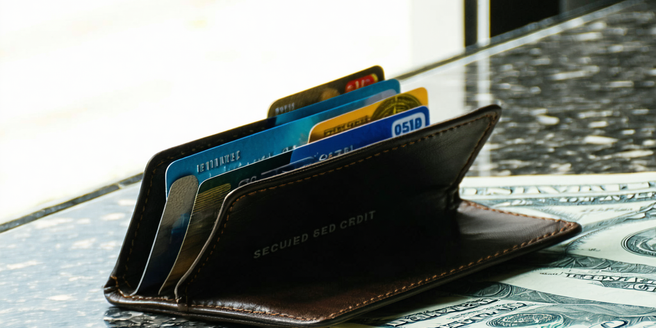Understanding Secured Credit Cards
| Aspect | Description | Importance |
| Security Deposit | A cash deposit that acts as collateral | Essential for account opening |
| Credit Limit | Typically matches the security deposit | Influences spending capacity |
| Building Credit | Reports to credit bureaus | Helps improve scores |
| Fees | May include annual fees and others | Affects total cost of card ownership |
| Interest Rates | Charges applied to balances | Can impact cost if carrying balance |
| Conversion | May upgrade to unsecured card | Potential for better terms |
How Secured Credit Cards Work
Secured credit cards function similarly to traditional credit cards with one key difference, the requirement of a deposit. This deposit serves as collateral against the credit limit and protects the card issuer in case of defaults. When cardholders make purchases with a secured card, transactions are processed as they would be with any other credit card. Cardholders receive monthly statements reflecting their purchases and are required to make payments accordingly. If payments are made on time and in full each month, cardholders will have the opportunity to build credit. Secured credit cards are an effective tool for establishing or rebuilding credit, as payment history is typically reported to credit bureaus. As individuals demonstrate financial responsibility, they may qualify for an unsecured card, often resulting in the return of the security deposit and access to better credit terms.
Benefits of Using Secured Credit Cards
Secured credit cards offer a range of benefits, particularly for those looking to establish or rebuild their credit. A significant advantage of secured cards is that they often provide an avenue for individuals who might not qualify for traditional credit cards due to poor credit history or no credit history at all. By using a secured credit card responsibly, cardholders can improve their credit scores over time, opening doors to more financial opportunities and better interest rates. Moreover, many secured credit cards report to the major credit bureaus, allowing consistent use and on-time payments to positively influence credit reports. In addition to credit building, secured cards can help individuals learn to manage credit responsibly by maintaining a low utilization rate and making payments diligently. Secured cards might also offer some rewards or cashback incentives, though they may be limited compared to regular credit cards.
Who Should Consider Secured Credit Cards?
Secured credit cards are an ideal option for a broad range of individuals, offering a valuable stepping stone in various credit journeys. Primarily, they are exceptionally beneficial for people with little to no credit history, such as young adults starting their financial independence or recent immigrants establishing credit in a new country. Those who have experienced financial setbacks, like past bankruptcies or poor credit history, might also consider secured credit cards as a rebuilding tool. As they manage the card responsibly, they can enhance their credit scores over time, regaining financial health and credibility. Additionally, secured cards can serve as a practical solution for individuals who cannot obtain an unsecured credit card due to stringent credit policies or existing debts. This option allows them to demonstrate financial responsibility, ensuring a positive reflection in their credit reports while providing an opportunity for upgraded credit offerings in the future.
Differences Between Secured and Unsecured Credit Cards
The primary distinction between secured and unsecured credit cards lies in the security deposit requirement. Secured cards necessitate a cash deposit, which serves as both a credit limit and collateral for the issuer. Unsecured credit cards, however, do not require a deposit and often come with variable credit limits based on an individual’s creditworthiness. As such, unsecured cards typically offer higher credit limits alongside additional benefits and rewards programs. Another key difference involves eligibility; unsecured cards require a decent credit score for approval, while secured cards are accessible to those with limited or poor credit histories. Furthermore, interest rates and fee structures may differ, with unsecured cards offering more competitive rates. Despite these differences, both types of cards can help build credit history, provided that payments are made on time, and the cards are used responsibly.
How to Choose the Right Secured Credit Card
Choosing the right secured credit card involves evaluating several factors to ensure a beneficial match for your financial needs. First, compare various offers to understand fee structures, including annual fees, maintenance charges, and penalties. Look for cards with reasonable fees to minimize costs. Next, examine interest rates, as lower rates will reduce the cost of carrying a balance. Assess the credit limit arrangement tied to the security deposit, contemplating whether it suits your intended use of the card. Opt for a card that reports to the major credit bureaus if building credit is your primary goal. This feature allows your credit activity to positively impact your credit score. Additionally, explore cards that potentially upgrade to unsecured cards, as this transition can enhance your credit options without requiring a new application. Consider any added benefits or incentives, from rewards programs to cashback offers, balancing these perks against any associated costs or restrictive terms.
Common Myths About Secured Credit Cards
Secured credit cards are often surrounded by misconceptions that may deter potential users. One common myth is that secured cards are only for those with poor credit. While they indeed serve as an excellent tool for credit rebuilding, secured cards can also benefit credit novices or those with limited credit experience looking to establish a record. Another myth suggests impossibility in upgrading a secured card to an unsecured one. In reality, many issuers allow for conversion upon demonstrating responsible usage and timely payments. A further misconception is that secured cards are not legitimate credit cards. Contrary to this belief, secured cards function as regular credit cards, enabling online purchases, travel bookings, and other transactions. They also generally report payment history to credit bureaus, just like traditional cards. Lastly, some believe that secured cards carry excessively high interest rates, but in truth, these rates vary by issuer, with many offering competitive rates comparable to unsecured options.
Tips for Managing Your Secured Credit Card
Effective management of a secured credit card is crucial for maximizing its benefits in credit building and financial health improvement. Start by maintaining on-time payments, as late payments can significantly harm your credit score and result in additional fees. Consider setting up automatic payments or calendar reminders to avoid missed due dates. Keep your credit utilization low; best practices suggest using less than 30% of your available credit at any time. Regular monitoring of your account can help spot and address unauthorized transactions quickly. Additionally, staying mindful of fees and interest charges can avoid unnecessary costs; strive to pay off your balance in full monthly to circumvent interest charges. Finally, regularly review your credit reports from major bureaus to track your progress, and promptly dispute any inaccuracies, ensuring your responsible card use reflects accurately on your credit history.
Step-by-Step Guide to Building Credit with Secured Cards
Leveraging secured credit cards for credit building involves a strategic approach. Begin by selecting a secured card that reports to all three major credit bureaus, ensuring your credit activity is captured comprehensively. Initiate this journey with a security deposit you can comfortably afford, aligning with your anticipated credit limit needs. As you make purchases, prioritize keeping your credit utilization below 30%, reflecting responsible credit management. Payments should be made in full and punctually each month, reinforcing a positive payment history, a critical component of credit scoring models. Regularly reviewing credit statements helps identify any discrepancies or fraudulent activity, safeguarding your credit efforts. Maintain consistency over time, avoiding sudden spending spikes or multiple applications for different credit products. Patience is key; as your credit scores improve, explore opportunities to transition to an unsecured card. This conversion endorses your commitment to financial discipline, unlocking more favorable credit terms and benefits.
Secured Credit Card FAQs
Understanding secured credit cards can raise numerous questions for prospective users. One frequently asked question is about the security deposit’s fate; typically, deposits are refunded upon closing the account in good standing or transitioning to an unsecured credit card. Another common inquiry involves qualifying criteria, where most secured cards require basic identification and financial stability evidence, making them more accessible than unsecured options. Additionally, people often ask about potential credit score impacts; secured cards indeed affect credit scores as they report to credit bureaus, assuming responsible use. Many wonder if secured cards offer rewards; while some do, options may be limited compared to traditional cards. A further question concerns converting secured cards to unsecured ones, which is possible with demonstrated creditworthiness. Last but not least, there is curiosity about credit limit adjustments over time; increases generally align with additional deposits, though some issuers may offer gradual elevations as credit improvement is observed.



